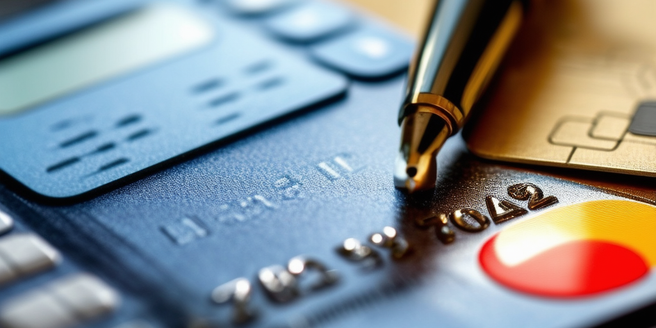
Understanding Credit Card Minimum Payments
Understanding the process used in calculating credit card minimum payments is pivotal for financial management. Typically, card issuers require a minimum payment of 2% to 3% of the remaining unpaid credit balance. This sum helps avoid late fees and maintain good credit standing. It’s important to comprehend this as it directly impacts your financial health.
This rate can vary between card issuers, resulting in different calculated minimum payments. Despite differences, it is predominantly determined by charging a certain percentage of your remaining credit balance. Essentially, your minimum payment is a proportion of what you owe. Understanding how to predict this amount is crucial for successful financial management and avoiding credit card pitfalls. Thorough understanding of the calculations can aid in managing current debts and avoiding unexpected future ones.
How Credit Card Companies Calculate Minimum Payments
Credit card issuers consider multiple factors when estimating the minimum payment due from a cardholder, especially the outstanding balance and the APR (Annual Percentage Rate). The computation of this payment is usually a percentage of the total outstanding balance plus any interest or late fees. This calculation method varies across issuers, with some setting fixed amounts such as $20 or a percentage of the balance, whichever is greater. Others may charge a percentage of the balance plus interest or even include late fees. This complex process aims to strike a balance between the issuer’s need to recuperate their money and the cardholder’s ability to repay in a manner that is manageable and fair, with terms that differ according to the card issuer’s policies. The final goal, however, is consistent across issuers: to determine a minimum payment estimate that optimally serves both parties.
Factors Impacting Your Minimum Payment
Several variables can influence your minimum payment including your remaining unpaid balance, the interest rate specified by your credit card issuer, and any additional penalties received. The most significant of these is your outstanding balance, which represents the total amount you owe, comprising all purchases, any accrued interest, and in certain circumstances, penalties for non-compliance. As unpaid purchases continue to accumulate, the outstanding balance grows, necessitating a larger minimum payment. It’s therefore recommended to limit spending or pay more than the minimum, ensuring a manageable balance.
Besides, the card’s interest rate, known as the Annual Percentage Rate (APR), set by the issuer, is another crucial component. A lower APR tends to reduce overall debt. Another factor influencing your payment is any penalties incurred for late payments, over-the-limit transactions, or rejected payments, which increase your minimum payment.
In conclusion, your credit card’s minimum payment is a computation based on parameters such as your outstanding balance, the card’s interest rate, and any penalties you’ve attracted. The best method to lower the minimum payment is by reducing these variables, particularly the outstanding balance.
Effects of Making Only Minimum Payments
Relying solely on making the minimum payments on your debts can lead to substantial debt over time due to the compound interest effect. Compound interest can escalate the total amount you owe substantially, as minimum payments typically only cover the interest while barely affecting the principal amount owed, thereby perpetuating the debt cycle. Furthermore, consistently making only the minimum payments reflects poorly on your credit score due to a high credit utilization ratio, indicating a reliance on credit to manage one’s finances. Contrarily, paying more than the minimum on your debts is empowering and beneficial to your financial future, even if allocating extra money towards debt payments seems difficult. This approach not only decreases the debt principal faster and reduces the amount of interest, but also improves the credit score by lowering credit utilization, making one a more attractive prospect for future lenders.
Strategies to Pay Off Credit Card Debt Faster
Consistently paying more than the minimum amount each month is a key strategy in overcoming credit card debt, as it lowers the overall amount paid and reduces the lifespan of the debt. It’s important to strategically plan your funds to allocate more money towards payments, such as drafting a well-planned budget to track and potentially reduce habitual spending. The saved money can then be redirected towards credit card payments, reducing the debt faster.
Another effective strategy is utilizing balance transfers where you move your debt from a high-interest card to one with a lower or zero percent introductory rate, thus saving on interest payments and more directly targeting the principal debt. Employing strategies like the snowball and avalanche methods can aid in targeting and eliminating specific debts sooner too. These involve tackling either the smallest debt or highest interest debt first while making minimum payments on the others, subsequently moving onto the next smallest or highest interest debt. Both can expedite the debt-free process when implemented correctly.
